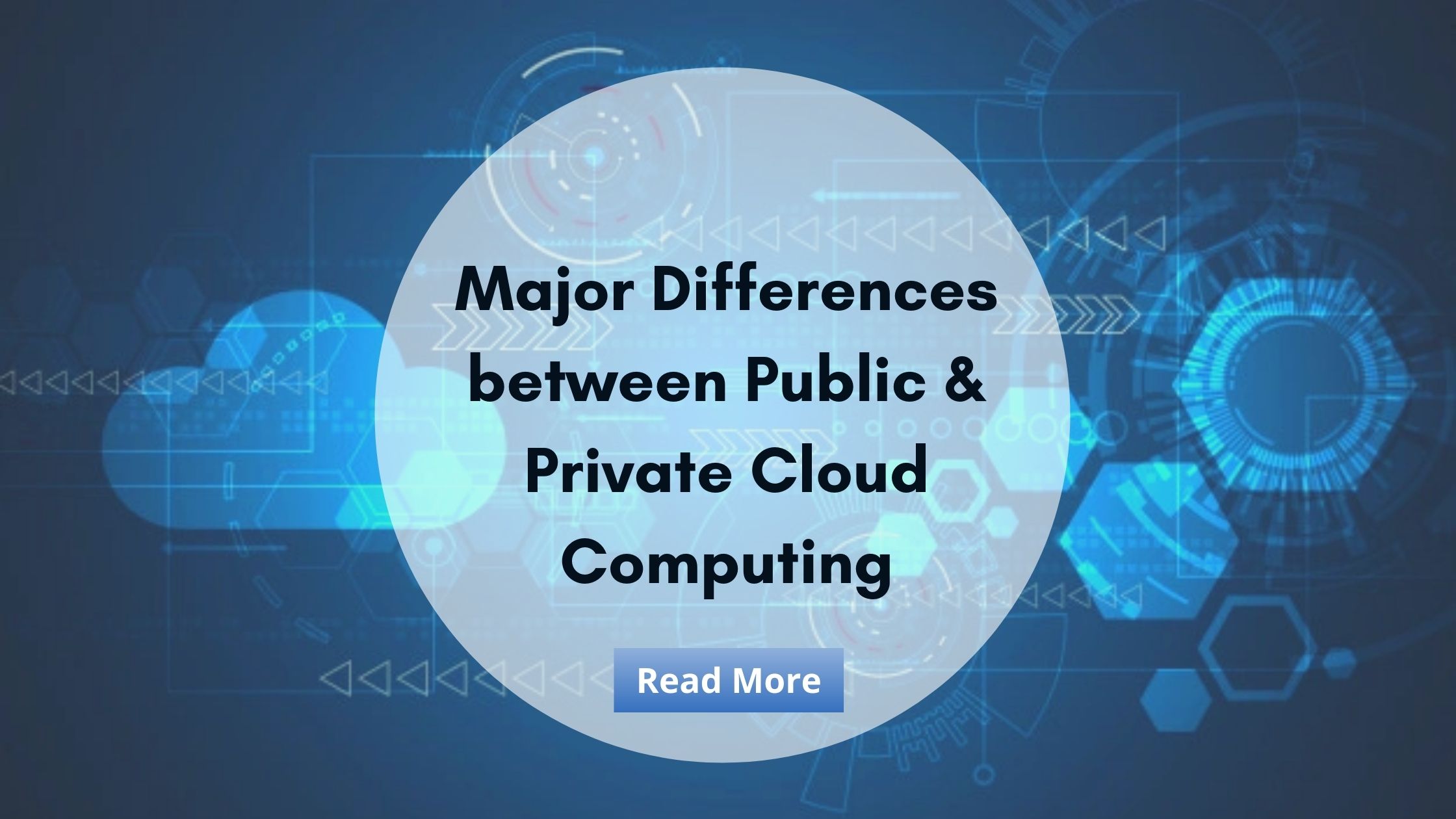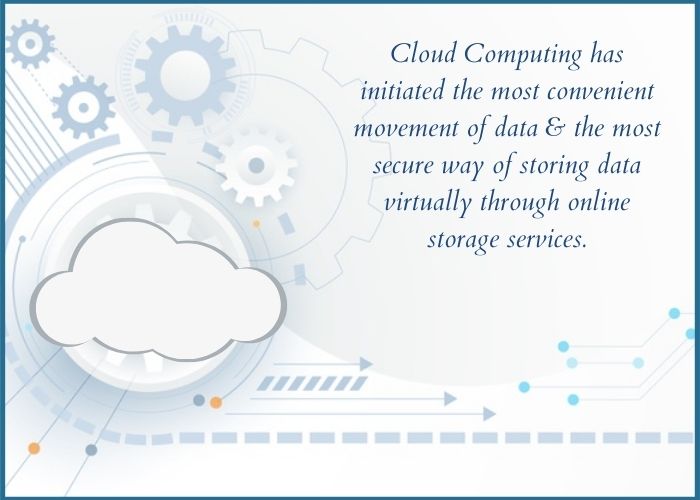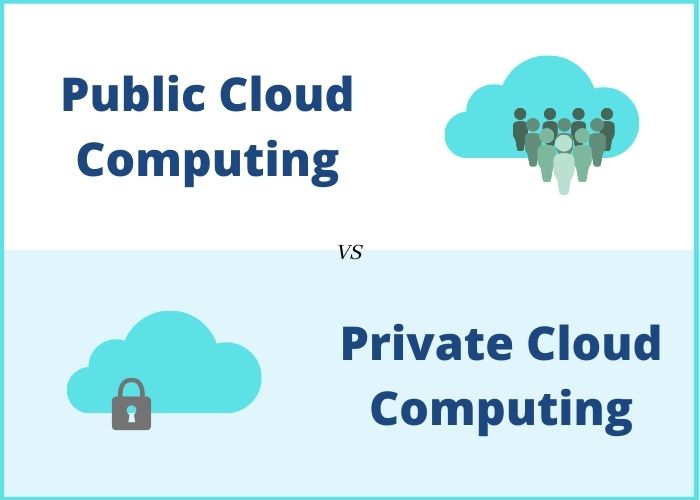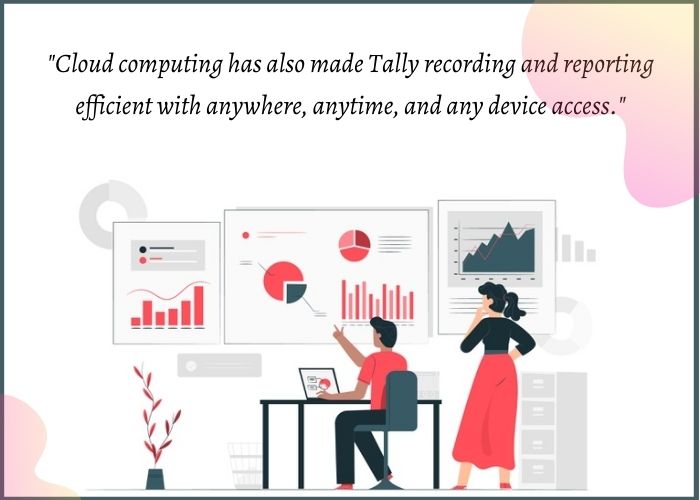
Major Differences between Public and Private Cloud Computing
Introduction
Cloud computing has developed as a critical tool in the digital age, enabling business change and innovation. It provides scalable resources via the internet, including servers, storage, databases, networking, software, and more, allowing businesses to operate more efficiently and cost-effectively. Cloud computing is typically divided into two types: public and private clouds. Each has distinct qualities, benefits, and downsides. This blog aims to explain these two cloud computing models, highlight their key distinctions, and assist you in determining which model best meets your objectives.

What is Public Cloud?
The public cloud is a cloud computing concept in which cloud services are supplied via the internet and shared by various businesses or customers. Third-party cloud service providers own and run the infrastructure and services, including Amazon Web Services (AWS), Microsoft Azure, and Google Cloud Platform. Users can access and manage their accounts through web browsers. The public cloud is highly scalable and cost-effective, with no need for users to maintain or manage hardware and software.
What is Private Cloud?
Private cloud, on the other hand, is the cloud computing model where the cloud infrastructure is exclusively used by a single organization. It can be hosted internally within an organization’s data center or externally by a third-party service provider. The private cloud offers greater control, security, and customization. It is ideal for businesses with strict data security, compliance requirements, or those that require dedicated resources.
Difference Between Public Cloud and Private Cloud
Feature | Public Cloud | Private Cloud |
|---|---|---|
Accessibility | Over the internet, available to anyone | Restricted to a single organization |
Cost | Generally more cost-effective, pay-per-use model | Higher initial cost due to dedicated resources, but can be cost-efficient for long-term use |
Scalability | Highly scalable, on-demand resources | Scalable but within the limits of the private infrastructure |
Security | High-level security, but shared with other users | Enhanced security and control, as resources are not shared |
Performance | Potentially variable, due to shared resources | Consistent performance, as resources are dedicated |
Maintenance | Managed by service providers | Managed by the organization or a dedicated third party |
Compliance | Providers ensure compliance, but limited to generic standards | Customizable to meet specific industry or legal requirements |
Customization | Limited customization options | Highly customizable to meet specific organizational needs |
Implementation Speed | Quick to deploy and easy to scale | May require more time to set up and customize |
Ideal Use Cases | Small to medium-sized projects, startups, testing environments | Enterprises with specific compliance, security, or performance needs |
When to Use Public Cloud vs Private Cloud
Public Cloud
Perfect for businesses looking for scalability, flexibility, and cost-efficiency without the need for heavy customization or strict compliance standards. Suitable for startups, small to medium-sized enterprises, and projects with variable workloads.
Private Cloud
Best suited for organizations that require strict data security, regulatory compliance, and high levels of customization. It’s beneficial for large enterprises and industries such as finance, healthcare, and government sectors.
Advantages and Disadvantages of Public Cloud
Advantages
1. Cost-effective
Using cloud computing removes the requirement for physical machines, significantly lowering both the initial and ongoing expenses related to operations.
2. Scalability
The ability to adjust computing resources to meet current demands is a hallmark of cloud services, making scaling up or down straightforward.
3. Flexibility
Cloud computing provides a diverse selection of services and applications, allowing businesses to choose solutions that best fit their needs.
4. Maintenance
With cloud services, the burden of maintaining, updating, and managing the IT infrastructure lies with the cloud provider, not the user.
5. Accessibility
Cloud services ensure that users can access their data and applications from any location, provided they have an internet connection.
Disadvantages
1. Limited Control
Users do not have much control over the system and operational procedures, which limits management skills.
2. Security Concerns
Sharing computing resources among several users might pose security flaws, increasing the possibility of data losses.
3. Compliance Issues
Industries that must follow strict regulations may find this solution inappropriate due to the danger of noncompliance.

4. Performance Variability
The efficiency and speed of services may differ depending on the activity of other users sharing the same infrastructure.
5. Customization Limits
Compared to dedicated private clouds, this tally solution offers less opportunity to adapt services and features to unique requirements.
Advantages and Disadvantages of Private Cloud
Advantages
1. Enhanced security
Improves security management for both data and infrastructure, providing greater protection against unwanted access and potential attacks.
2. Customization
Can be tailored extensively to suit the unique needs of an organization, making it highly adaptable to specific requirements.
3. Compliance
Simplifies the process of following restricted industry laws and compliance requirements, ensuring legal and operational consistency across sectors.
4. Dedicated resources
Provides consistent and reliable performance by allocating resources directly to one person or organization, avoiding shared usage issues.
5. Control
Allows for accurate governance of the cloud computing environment and operational procedures, ensuring that choices are taken with complete authority.
Disadvantages
1. Higher cost
Establishing a private cloud requires significant financial investment in both hardware and software infrastructure. Additionally, significant resources must be set aside for continuing administration and operational expenses.
2. Complexity
Setting up a private cloud network is naturally more complex than using public cloud services. It requires specific knowledge to design, implement, and ensure proper operation, making it a difficult task for enterprises.
3. Scalability
A private cloud’s expansion potential is essentially limited by the physical limitations of the organization’s data center. Expanding capacity necessitates more investment in physical resources, which can be expensive and time-consuming.
4. Maintenance responsibility
In contrast to public clouds, where the infrastructure is managed by the service provider, a private cloud requires dedicated IT professionals and resources to ensure maintenance, updates, and security.

5. Slower deployment
Implementing a private cloud system frequently entails a lengthy process of customization and configuration to match specific organizational requirements. This might cause considerable delays in service availability when compared to the rapid deployment characteristics of public clouds.
Conclusion
The decision between public and private cloud computing is based on your organization’s specific requirements, budget, and strategic goals. Public clouds are cost-effective, scalable, and flexible, making them ideal for a wide range of organizations and applications. Private clouds offer improved security, control, and flexibility for enterprises with specialized needs. Understanding the differences, benefits, and drawbacks of each model will help you make an informed selection that is in line with your business goals.
Make your Tally more efficient by hosting your version of Tally on cloud. For Free Tally Prime on Cloud Live Demo or details about Tally on Cloud prices visit Tallycloudhub Today.
Frequently Asked Questions
Q.1 What is the main difference between public and private cloud?
The main difference lies in accessibility and resource sharing. Public cloud services are shared across multiple organizations over the internet, while private cloud services are exclusively used by a single organization.
Q.2 Can a business use both public and private clouds?
Yes, many businesses adopt a hybrid cloud approach, using both public and private clouds to balance flexibility, cost, and security needs.
Q.3 Are public clouds less secure than private clouds?
Public clouds are generally secure and offer robust security measures. However, private clouds offer enhanced security control, making them suitable for sensitive data and compliance requirements.
Q.4 How do I choose between public and private cloud?
Consider factors like cost, scalability, security, compliance, and specific business needs. Public clouds are suitable for general purposes and scalability, while private clouds are better for specific security and compliance requirements.
Q.5 Can I switch from one cloud model to another?
Yes, organizations can migrate from one cloud model to another, but it requires careful planning and consideration of data transfer, compatibility, and potential downtime.

